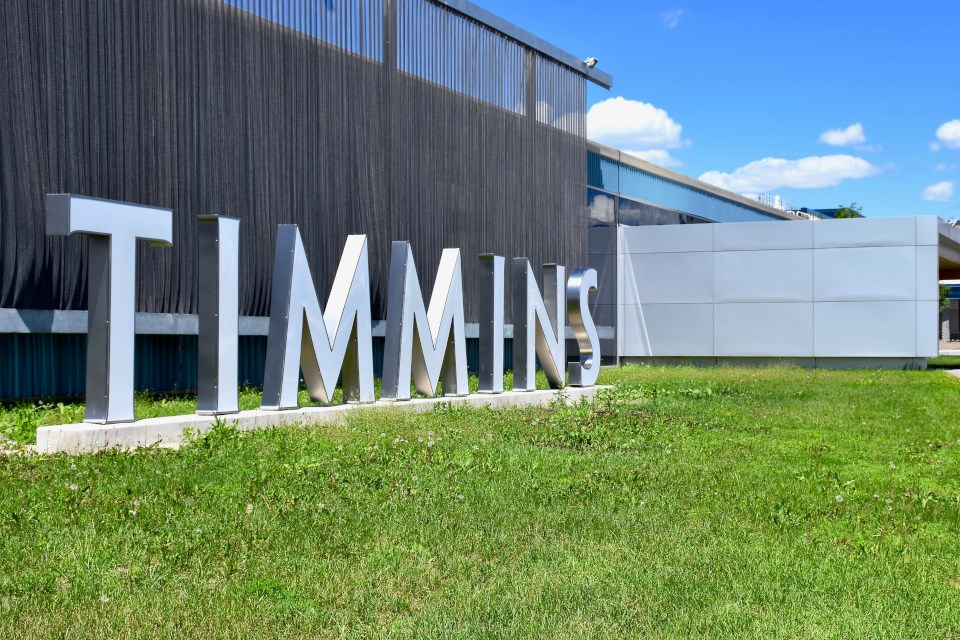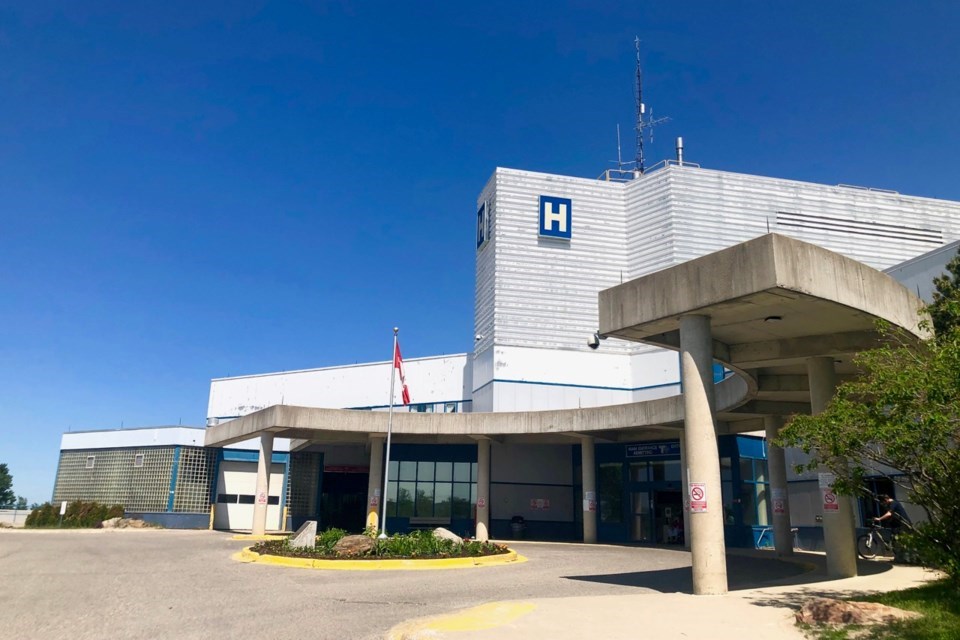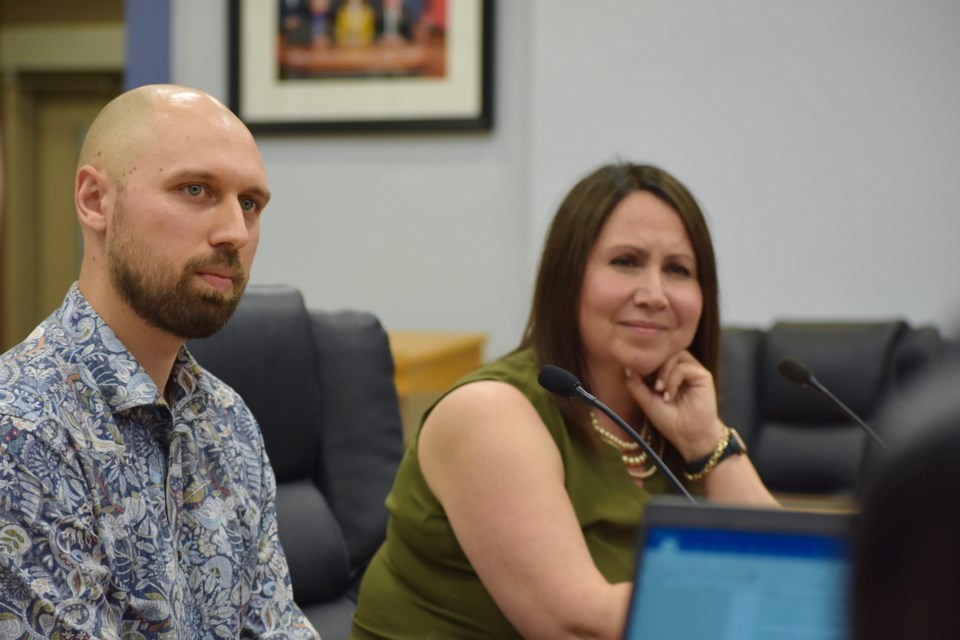TIMMINS - From the tree-lined patio of a camp overlooking Kamiskotia Lake, physician recruiter Corey Krupa delivers his best sales pitch to a recently graduated radiologist from the Greater Toronto Area.
But the sales pitch isn’t just about the job or the Timmins and District Hospital (TADH.) It’s more about the community.
“Hiking, kayaking, winter sports, the outdoors,” Krupa said. “I want to know — is the Timmins lifestyle a good fit for this physician?”
In the past two years since he’s been at the helm of the TADH physician recruitment program, Krupa has refined his approach to new doctors, focusing on elements that other cities can’t provide: lifestyle, culture and affordability.
There are also a few things Timmins offers that simply can’t be experienced anywhere else.
Wolves, for one.
“When someone comes here for the first time, I want them to have a good, lasting memory of Timmins. Something unique,” Krupa said. “I was able to set up this particular physician at Cedar Meadows, sleeping with the wolves.”
To help win his recruit over, Krupa set the doctor up with a room at the 175-acre Nordic-style resort, just outside the city. From behind its floor-to-ceiling windows, you can literally watch wolves go about their day.
“When she stayed, the wolves had just had a litter of pups,” Krupa said. “So there's wolves walking around, basically right in front of her, playing and howling. She had one wolf that was just outside her room, hanging around.
“You can’t get that anywhere else.”

Krupa’s potential recruit — he is keeping her name under wraps until contract negotiations are complete — has her choice of suitors, and before her trip to Timmins had already fielded several offers from other hospitals.
Hamilton, London, and Ottawa are all facing shortages, and aggressively pursuing both new graduates and international specialists to bolster the number of doctors in their cities.
But most, if not all, communities in Ontario are feeling the crunch to hire more physicians. The shortage of family doctors, which the Ontario Medical Association says is expected to only increase in the next few years, hits smaller northern cities harder.
“Timmins is kind of at a tipping point,” Krupa said. “We're experiencing a shortage of approximately 40 doctors right now, 15 of them being family physicians, and 25 specialists.”
That amounts to about 10,000 people in the city without a family doctor — unattached, is how it’s referred to in the profession — and that number is only expected to increase.
“In the next five years we're expecting a wave of retirements when it comes to family physicians,” he said. “If all were to retire at retirement age, we're at a risk of about 30,000 people in our community in the next five years not having a family doc.”
Those without doctors tend to seek care at the already crowded ERs, Krupa said, which bogs down the health-care system for everyone.
Finding 10 new doctors a year
The TDH’s mandate is daunting: bolster the number of physicians in the city by 10 annually.
It’s an attainable goal, Krupa said, even though in recent years they haven’t hit the targets. Adding to the pressure is a recent spurt in the city’s population.
In May, Statistics Canada reported an increase of about 1,000 residents in Timmins. Much of that could be attributed to a booming mining sector and the Rural and Northern Immigration Pilot (RNIP) program, which has attracted newcomers to the area.
“In the last 10 years we’ve recruited, on average, three doctors,” Krupa said, admitting that past efforts were “nowhere near” where the city hoped to be.
“But since 2022, when the community and the hospitals put a focus on recruitment, we’ve doubled our numbers to six recruits, and then last year, we were able to reach nine positions, so we’ve tripled our numbers.”
“We're on the right path,” he said. “Ten, I think, is a realistic, sustainable, goal.”
There’s also a host of incentives the community offers to attract new doctors: in July, Timmins council approved a three-year financial commitment to the physician startup grant.
It will see the city pay out $20,000 per new physician up to a maximum of $200,000 per year for three years.
In June, The Venture Centre also announced its Timmins Physician Loan Incentive program that offers up to 10 repayable loans per year to doctors relocating to the city.

Incentives an ‘extra push’ in new doc’s choice
Dr. Eve Boissonneault — a Northern Ontario School of Medicine (NOSM) graduate whose family is originally from Timmins — was recently recruited for Timmins’ ER department.
She said she and her partner — also an ER doctor — had “plenty of options” of where to settle.
But it was the hospital’s efforts, especially Krupa’s advocacy and navigation through the city’s incentive programs, that proved to be factors in deciding to locate in the community.
“My ties to Timmins really helped in the decision, and the fact that my husband and I enjoy the Northern Ontario lifestyle was our initial draw,” Boissonneault said.
“I think the incentives were just an extra push to come to Timmins, because it does make a difference for a young couple starting out in life with a lot of debt.”
Dr. Boissonneault’s husband is finishing up a residency at Health Sciences North in Sudbury, but expects to join her in Timmins before the winter.
The emphasis on creating an inviting community for the young family was at the centre of Krupa’s pitch, Boissonneault said.
“[Krupa] helped us tailor our contract to what suited us best and what allowed us to practise in the areas of medicine we were trained in,” Boissonneault said. “He worked really hard to work with both the city and the hospital to get us some incentives to stay in Timmins, and we really appreciate that.”
“Obviously, having two of us with a lot of debt, it’s very helpful and goes a long way.”
With annual tuition at medical school hovering around $25,000, Boissonneault estimates that most physicians graduate medical school with over $100,000 in debt.
Any incentive — whether its reimbursement of interest paid on loans, or just a general cost-of-living advantage — is a major factor for any young doctor when deciding where to set up shop.
“Being able to put the recruitment incentives towards that debt kind of alleviates some of the stress that comes with paying it off very quickly,” Boissonneault said. “And the cost of living is lower in comparison to Sudbury.”
“It just allowed us to purchase a house sooner, and then just help with the debt.”
But it’s not just about the money. Timmins is earning a reputation in the medical field for its collegial working environment, not to mention the opportunities for doctors.
“Everyone's very welcoming and friendly and gets along,” Boissonneault said. “It's just an easy environment to work in.”
‘We need to get ahead of this,’ Timmins mayor says
But the city isn’t done looking for new, imaginative ways to attract and keep new doctors.
At a recent meeting of municipal leaders from across the province, Timmins Mayor Michelle Boileau had the opportunity to make her own pitch to Health Minister Sylvia Jones.
“She is very engaged,” Boileau said. “She's very familiar with the challenges across the province, and that they may be more acute in Northern Ontario.
“More specifically, the minister wanted to hear what we thought could be done.”
Boileau suggested to Jones the province continue to fund facility upgrades, like the TDH’s application to expand its emergency room.
“What we're hearing is that recent med school grads are looking for modern, turnkey facilities that they just step into,” Boileau said. “A facility with minimal overhead for them to assume, and that allows them to start practising in the community.”
It’s becoming a bit of a concern, especially as Timmins goes through what appears to be a mini-boom.
“It's exciting, but it's becoming increasingly obvious that we really do have to get ahead of this,” Boileau said.
“We’re hearing from employers who are having a hard time recruiting workers, because the workers that they need don't have access to family physicians.
“I think it's great that we're focusing on this, because it really has to be done in tandem with all of the other initiatives that are being put in place to grow our community and our population.”
SEE: Timmins will pay to help attract new doctors
For her part, Boileau has organized an annual networking event with third-year NOSM students, a “cross-section” of community artists, leaders and professionals.
“It’s quite obvious they’re shopping,” Boileau said. “And they have plenty of options.
“So the event allows learners to get a better sense of who makes up the city of Timmins, to ask questions, try to find something for themselves, find their interests here.”
The idea, Boileau said, is to show prospective physicians that they are appreciated by the community, and also get a chance to find out more about what graduates are looking for in a home community.
But when speaking with the students, Boileau doesn’t shy away from plugging her hometown — and also promoting Northern Ontario’s lifestyle.
“The fact that you could get off your shift and within five minutes be on a golf course, or in 15 minutes be in a canoe or a kayak on a lake or a river, and there's a great quality of life here ... that's something that we're always trying to amplify.”



